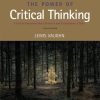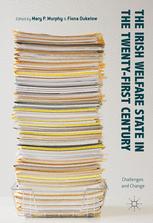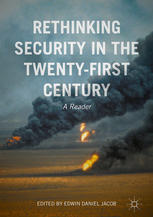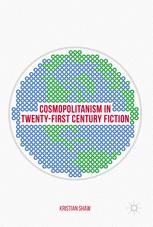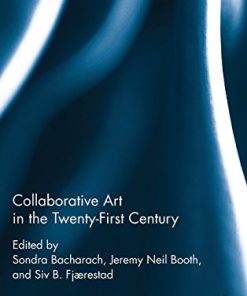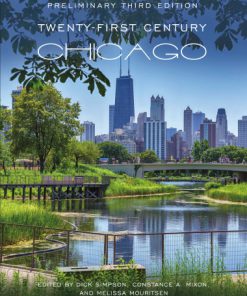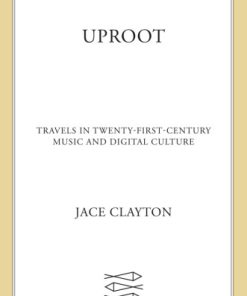A Conservative Revolution Electoral Change in Twenty First Century Ireland 1st Edition by Michael Marsh, David M Farrell, Gail McElroy ISBN 0192519719 9780192519719
$50.00 Original price was: $50.00.$25.00Current price is: $25.00.
A Conservative Revolution Electoral Change in Twenty First Century Ireland 1st Edition by Michael Marsh, David M Farrell, Gail McElroy – Ebook PDF Instant Download/Delivery: 0192519719, 9780192519719
Full download A Conservative Revolution Electoral Change in Twenty First Century Ireland 1st Edition after payment
Product details:
ISBN 10: 0192519719
ISBN 13: 9780192519719
Author: Michael Marsh, David M Farrell, Gail McElroy
The 2011 general election in the Republic of Ireland, which took place against a backdrop of economic collapse, was one of the most dramatic ever witnessed. The most notable outcome was the collapse of Fianna Fáil, one of the world’s most enduring and successful parties. In comparative terms Fianna Fáil’s defeat was among the largest experienced by a major party in the history of parliamentary democracy. It went from being the largest party in the state (a position it had held since 1932) to being a bit player in Irish political life. And yet ultimately, there was much that remained the same, perhaps most distinctly of all the fact that no new parties emerged. It was, if anything, a ‘conservative revolution’. A Conservative Revolution? examines underlying voter attitudes in the period 2002-11. Drawing on three national election studies the book follows party system evolution and voter behaviour from boom to bust. These data permits an unprecedented insight into a party system and its voters at a time of great change, as the country went through a period of rapid growth to become one of Europe’s wealthiest states in the early twenty-first century to economic meltdown in the midst of the international Great Recession, all of this in the space of a single decade. In the process, this study explores many of the well-established norms and conventional wisdoms of Irish electoral behaviour that make it such an interesting case study for comparison with other industrialized democracies.
A Conservative Revolution Electoral Change in Twenty First Century Ireland 1st Table of contents:
1. Introduction: The 2011 Election in Context
Introduction
An ‘Electoral Earthquake’?
Research on Irish Election Results
The Structure of this Volume
Elections in a Time of Economic Crisis
2. Class Politics in Ireland: How Economic Catastrophe Realigned Irish Politics
Introduction
Class Politics in Ireland
The Realigning 2011 Election
Analysis
Conclusion
3. The Economy and the Vote in Irish National Elections
Governmental Popularity and the Economy, 1970s–1990s
The Irish Voter and the Economy: The 2002 Baseline
Economic Voting during Changing Times: 2001–2007
Economic Voting in a Crisis: 2011
The 2011 Economic Effects: A Simple Confirmative Analysis (and the Restricted Variance Problem)
How to Overcome the Restricted Variance Problem? Use Time
Summary and Conclusions
4. Economic Voting through Boom and Bust: Information and Choice at Irish General Elections, 2002–2011
Introduction
Economic Voting: The Role of the Media
Data: Irish National Elections and the Economic Collapse
Measurement of Vote Choice, Media Reporting, and Control Variables
Results
Discussion and Conclusions
5. Party Competition in Ireland: The Emergence of a Left–Right Dimension?
Introduction
Left and Right Party Placement in Ireland
Left–Right Correlation with Socio-Economic Policy Issues
Overall Distribution of the Population and Candidates
Conclusion
6. The Lack of Party System Change in Ireland in 2011
Introduction
A Country Fit for Independents
Moving from Candidate Centred to Party Organized
Space for a New Party?
Electoral Institutions and Candidates
Conclusion
7. How Generational Replacement Undermined the Electoral Resilience of Fianna Fáil
Introduction
The Irish Party System and Patterns of Party Support and Electoral Competition
Generational Replacement and its Implications
Preferences for Multiple Parties
Data and Analytical Design
How Strongly Do Fianna Fáil Voters Prefer Fianna Fáil?
The Vulnerability of Fianna Fáil Potential Electoral Support
Compatibility or Incompatibility of Electoral Preferences for Fianna Fáil and Fine Gael
Concluding Remarks
8. The Malleable Nature of Party Identification
Expectations Regarding the Effects of Citizens’ Evaluations of Policy Performance on Party Identification
Measuring Citizens’ Evaluations of Policy Performance and Party Identification
Aggregate Levels of Partisanship in 2002, 2007, and 2011
Individual-Level Shifts in Partisanship between 2002 and 2007
Partisanship in 2011
Conclusions
9. Pathological Parochialism or a Valuable Service? Attitudes to the Constituency Role of Irish Parliamentarians
The Constituency Role in Irish Politics
The Data
Extent of Contact
How and About What Are TDs Contacted?
Political Cultural Attitudes towards TDs’ Local and National Focus
Does TDs’ Constituency Work Pay Electoral Dividends?
Conclusion
10. In the Line of Duty: The Moral Basis of Turnout in the 2011 Irish Election
Turnout in Ireland
Civic Duty in Ireland
Civic Duty and Turnout
Where Does Duty Come from?
Conclusion
11. After 2011: Continuing the Revolution
Party Support Trends since 2011
The Puzzle of Good Economic Performance and Poor Government Popularity
Summary and Conclusions
12. A Conservative Revolution? The Disequilibrium of Irish Politics
Fianna Fáil and the Irish Party System
What Explains the Stability?
What Explains the Fluctuations?
A New Equilibrium?
Appendix: The INES 2011 Questionnaire
Main Survey Questionnaire
People also search for A Conservative Revolution Electoral Change in Twenty First Century Ireland 1st:
a conservative revolution
what is a conservative revolution
why is the american revolution called a conservative revolution
how was the american revolution a conservative revolution
who led a conservative revolution in mexico in 1821
Tags:
Michael Marsh,David M Farrell,Gail McElroy,Conservative Revolution,Electoral,Ireland
You may also like…
Politics & Philosophy
Politics & Philosophy
Uncategorized
Politics & Philosophy - Anthropology
Collaborative Art in the Twenty First Century 1st Edition by Sondra 1317387430 9781317387435
Politics & Philosophy - Politics
Twenty First Century Chicago Preliminary 1st edition by Dick Simpson 802543D 9798823316651
Politics & Philosophy - Social Sciences
After critique. Twenty-first-century fiction in a neoliberal age 1st Edition Mitchum Huehls




